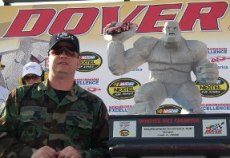Thursday, December 14, 2006
What's in a Crash?
Over the last 5 years the rate of accidents hasn't changed all that much, but it was highest in 2005 and came down slightly in 2006. It might be a larger influx of rookies the last wo years; and if that's the case it shouldn't go down in 2007.
Accidents cause the highest percentage of DNF's. Doesn't seem a strange thing to say, but an accident doesn't immediately result in not finishing. You blow it up (2nd largest cause of DNF's), and you're on the trailer for sure. But if the car isn't toast, seams like most teams try to get it back out there for as many points as they can get. Maybe I'm wrong on this one, or maybe it's just the teams actually going for a championship that get the wrenches out. No other cause of DNF's had more of a 5% chance of resulting in an early trip home.
Turns 2 and 4 is where the drivers get back on the gas hard, and where all the action is. That's where you get your seats if you want to be able to see the sheet metal fly. It's where I enjoy seeing the drivers recover from what seems like a sure wreck. Biffle, for one, is great to watch as he's rarely pointed in the right direction coming out of turn 4, and can some how bring it back from certain doom. I've seen him so sideways at Dover his team started to pack up his pit, only to watch him get up on the wheel and finish the lap.
No surprise that the short tracks lead in the number of accidents followed by the two 1 mile tracks. The big tracks are right in the middle all grouped together, and the cookie cutters are all through the list. Las Vegas and California seem to be th easiest on the fab shop.
The tab labeled Crashes by Driver tells the story of who had a good season almost as well as the points. The chasers are at the bottom of the list (least amount of crashes). It might have been interesting to see the stats after 26 races, as some people did better in the chase (Tony), and some people didn't do so well in the chase. It definably tells the story on Yeley, Nemecheck, Mears, and Robby Gordon. Yeley leads that pack with 17 crashes in 2006. I felt that I was being a little critical of J.J. throughout the season, but he wrinkled up a bunch of race cars, and here's the stats to prove it.
The tab marked Cautoins by Lap has some interesting figures in it, also. The two races at Martinsville had 194 caution laps, while both Pocono races don't add up to 60. The biggest difference I see is the amount of cautions between the Bristol race early in the season, and the Bristol race in the Chase. Seems like a lot of points racin' going on along with people being much more cauttiuos around the Top 10.
All and all a great job of compiling stats for me to dig through and blog about. Don't take my word for it. Go check it out for yourself.
































